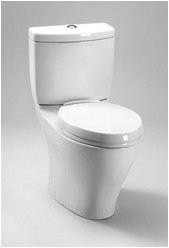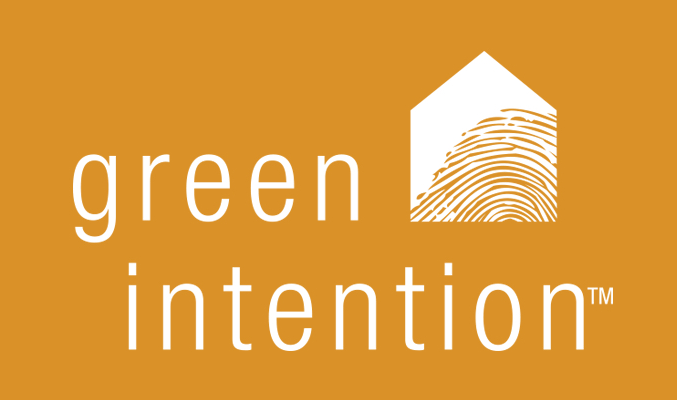 This last sub-section in the Water Efficiency portion of LEED for Homes gives points for water-efficient fixtures and fittings. According to the Reference manual, faucets, showers, bath and toilets typically account for 2/3 of a home’s indoor water use. Installing high-efficiency fixtures and fittings is an easy strategy for reducing indoor water use, as the most efficient fixtures use less than half the water of conventional alternatives. The measurement is in gpms: gallons per minute of water. There are three ways to earn points:
This last sub-section in the Water Efficiency portion of LEED for Homes gives points for water-efficient fixtures and fittings. According to the Reference manual, faucets, showers, bath and toilets typically account for 2/3 of a home’s indoor water use. Installing high-efficiency fixtures and fittings is an easy strategy for reducing indoor water use, as the most efficient fixtures use less than half the water of conventional alternatives. The measurement is in gpms: gallons per minute of water. There are three ways to earn points:
(a) The average flow rate for all lavatory faucets must be ≤ 2.0 gpm. (one point; if it is ≤ 1.5 gpm it is worth 2 points).
(b) The average flow rate for all showers must be ≤ 2.0 gpm per stall (one point; ≤ 1.75 gpm is 2 points).
(c) The average flow rate for all toilets must be ≤ 1.3 gpf (gallons per flush) (one point; ≤ 1.1 gpf is 2 points).
Choosing fixtures is an interesting exercise, because there are so many options, and you have to decide what you really care about: looks, feel, function, placement, etc. (On a side note, dishwashers and clothes washers I think are notably absent from this section; they are addressed in the Energy and Atmosphere section on Appliances.)
For sink fixtures, this should have been an easy way to rack up 2 more points. I had wanted to buy the Kohler Purist single-control lavatory faucet, which has a maximum flow rate of 1.5 gallons per minute. It also has a low-flow aerator option available, which would reduce that flow rate even more (but we would not get any additional points for that, because the base model is already at the two-point level). My husband, however (and architect for that matter), much prefers the Dornbracht line of faucets and shower heads. It is hard to argue that they are more beautiful, more durable–and more expensive. It is a German company, so I would think their flow-rates would be even lower than American-made faucets, as Germany has been a recent leader in sustainability. But the faucets we chose all have flow rates of 2.2 gpm — too high for any LEED points. (Apparently the company is working on developing low-flow aerator, but that option is not yet available.) So, no points so far….
For shower fixtures, we compromised: my husband got his Dornbracht shower fixtures in the master shower, and the kids’ rooms and guest bath got the Kohler brand. This ended up being more of a compromise on expense than on water efficiency, because both brands have flow rates of 2.5 gallons per minute — over the minimum requirement for even one point. (In any case, you can get whatever flow rate you want, but if you take 20 minute long showers, or several showers per day, it’s not efficient water use. LEED cannot monitor that, though!)
On to toilet fixtures. For us, choosing a dual-flush toilet was a no-brainer; there were several models available at relatively the same cost as the non-dual-flush models. Toto and Kohler both had models available, and we chose the Toto because we liked the looks of it better. The dual-flush toilets have two buttons on top: one for the “big” flush, which is 1.6 gpf, and one for the “little” flush, which is 0.9 gpf. To me, then, the average would be about 1.1 gpf (less than the straight average of 1.2), because there are many more little flushes on average than there are big flushes (at least in my house). This would earn us two points. But, the Reference Manual is very clear:
For the purposes of this calculation, dual-flush toilets should be treated as 1.25 gpf, or the high-flow volume, whichever is lower.
So, we only get one point under (c), instead of two. I think this is a flaw in the LEED rating system–though relatively minor–especially as technology changes and fixtures become even more efficient. And, what if we had bought composting toilets? We would be crazily water efficient, and not get any LEED points at all! (My family would probably have moved out, but that’s beside the point.)
We end up with just one point for this sub-section, and five points overall for water efficiency, exceeding the minimum requirement of three.
Total Water Efficiency points: 5
Cumulative points: 31
Additional points needed to get to Gold: 57

Last week, we installed aerators on all of our lavatory faucets, reducing the gallons-per-minute flow rate from 2.2 to 1.5! That gave us the two points we needed in this section. (The aerators for our specific type of faucet had not been available until now.) We are now saving over 1,000 gallons of water per year, without any change in convenience or lifestyle. While the aerators cost $20 each, most cost in the range of $10-$20. Some utilities (like Centerpoint Energy) provide them for free. This is a total no-brainer for water savings, cost savings, and LEED points!